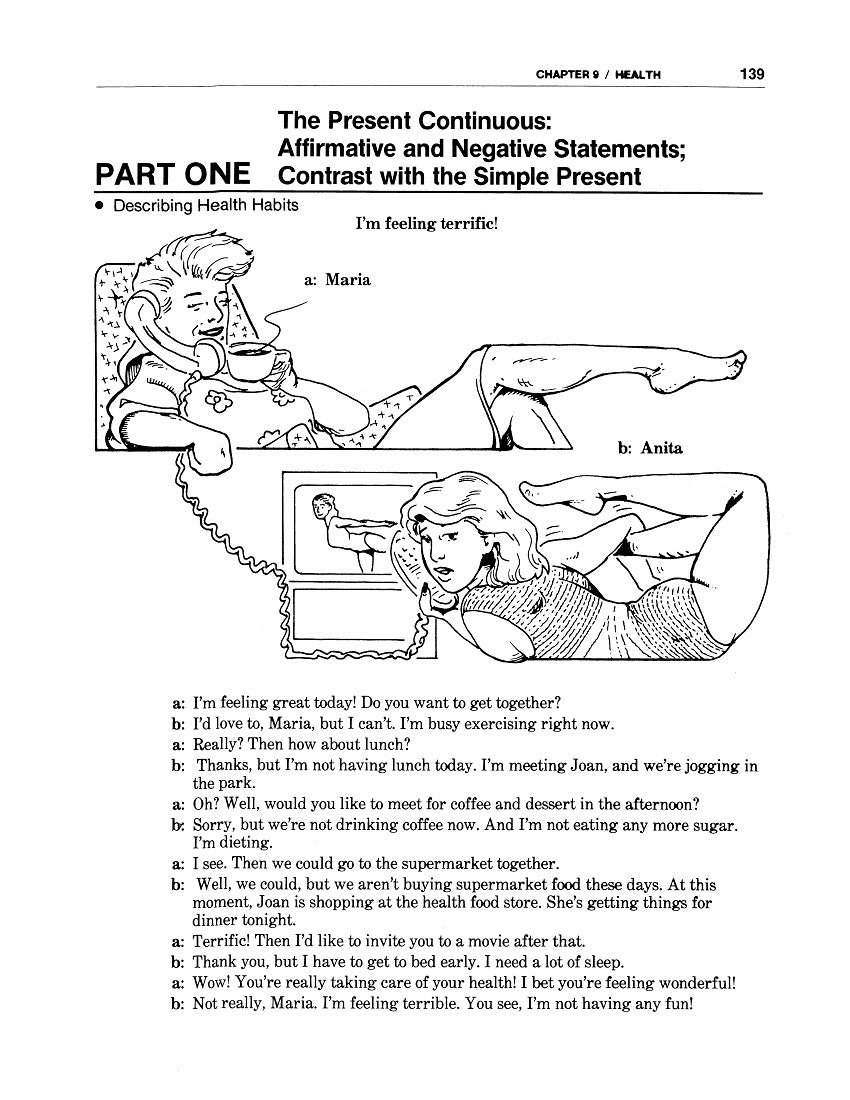1
/
of
1
Work/Life English
D-04.02 Use the Present Continuous (vs. the Simple Present) in Affirmative & Negative Statements, Questions & Answers
D-04.02 Use the Present Continuous (vs. the Simple Present) in Affirmative & Negative Statements, Questions & Answers
Regular price
$2.00 USD
Regular price
Sale price
$2.00 USD
Unit price
/
per
Parts One & Two of Chapter 9 (The Present Continuous / Contrast with the Simple Present: “Health”) of WorkLife English Grammar 2: English in Everyday Life
9 pages
Who It’s For: (Teachers & Helpers of) (High) Beginning Language Learners
Why It’s Useful: For activity in the (extended) present, the Present Continuous (or “Progressive”) Tense is often appropriate, but only with verbs used in action meanings. “Non-action verbs” appear in the Simple Present. The same rules can also apply to activities planned for the near future. Each of these two Parts—the first for Statements and the second for Questions & Answers—begins with instruction in continuous forms and patterns. It ends eliciting continuous vs. simple verbs according to their contexts.
What You’ll Do:
[1] By taking the roles of two people talking about what they’re doing for their health, converse in pairs: use the “I’m Feeling Terrific” Dialog on page 139. In Grammar-Pattern Boxes and exercises on pages 140-143, identify the elements of present continuous verb phrases, including forms of be contracted with subject pronouns. Page 142 focuses on contrasts in Time Expressions (and therefore meaning) for the Simple vs. Continuous Present.
[2] With the Thoughts/Speeches (“Are You Feeling All Right Now?”), Grammar-Pattern Boxes, + Exercises A-E on pages 144-147, present, practice, and “master” uses of the Simple vs. Continuous Present in Questions & Answers. Continue “anchoring” the forms in real-life Query & Response Dialogs.
Couldn't load pickup availability


